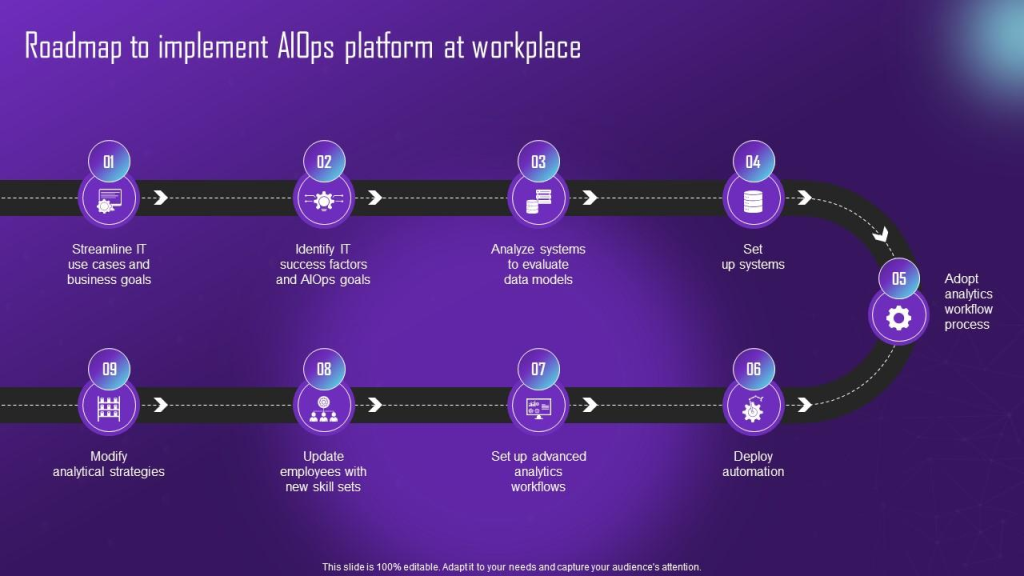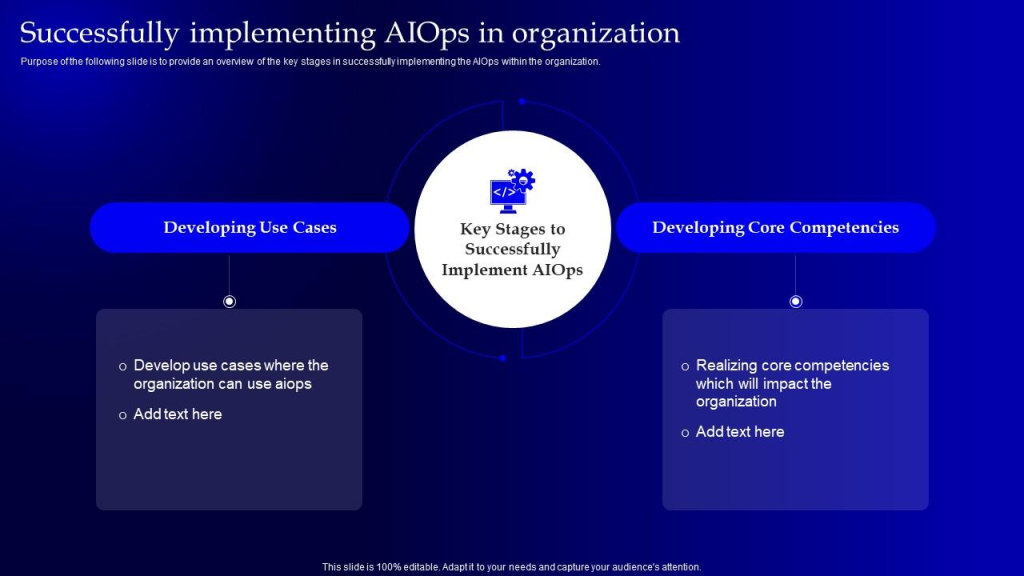Upgrade & Secure Your Future with DevOps, SRE, DevSecOps, MLOps!
We spend hours scrolling social media and waste money on things we forget, but won’t spend 30 minutes a day earning certifications that can change our lives.
Master in DevOps, SRE, DevSecOps & MLOps by DevOps School!
Learn from Guru Rajesh Kumar and double your salary in just one year.

Hey there, folks! Today, we’re going to talk about AIOps implementation strategy. You might be wondering, “What the heck is AIOps?” Well, AIOps stands for Artificial Intelligence for IT Operations, and it’s all about using AI and machine learning to automate and improve IT operations.
Now, let’s dive into the nitty-gritty of AIOps implementation strategy.
Understanding the Basics of AIOps
Before we get into the implementation strategy, let’s make sure we’re all on the same page about what AIOps is and why it’s important. In a nutshell, AIOps is all about using AI and machine learning to automate and streamline IT operations. It’s a powerful tool for reducing downtime, improving efficiency, and enhancing the overall performance of IT systems.
The Benefits of AIOps
So, why should you care about AIOps? Well, there are a ton of benefits to implementing AIOps in your organization. Here are just a few:
- Improved efficiency: AIOps can help automate routine tasks and reduce manual labor, freeing up your IT team to focus on more important work.
- Reduced downtime: By analyzing data in real-time, AIOps can help identify potential issues before they become major problems, reducing downtime and increasing uptime.
- Enhanced performance: AIOps can help identify trends and patterns in data that might not be immediately apparent to human analysts, leading to faster problem resolution and improved overall performance.
- Cost savings: By automating routine tasks and improving efficiency, AIOps can help reduce costs and improve the bottom line.
AIOps Implementation Strategy
Now that we understand the basics of AIOps and the benefits it can bring to your organization, let’s talk about how to implement it effectively. Here are a few key steps to follow:

Step 1: Define Your Goals
Before you start implementing AIOps, it’s important to define your goals and objectives. What do you want to achieve with AIOps? Are you looking to reduce downtime, improve efficiency, or enhance performance? By defining your goals up front, you can tailor your implementation strategy to meet your specific needs.
Step 2: Identify Your Data Sources
To effectively implement AIOps, you need to have access to the right data. This might include data from your IT infrastructure, your applications, your network, and more. Identify all the data sources that are relevant to your organization and make sure you have access to them.
Step 3: Choose Your AIOps Platform
Once you have your goals defined and your data sources identified, it’s time to choose an AIOps platform. There are a ton of options out there, so do your research and choose a platform that meets your needs and fits your budget.
Step 4: Train Your AI Models
Once you’ve chosen your AIOps platform, it’s time to train your AI models. This involves feeding your platform data and letting it learn from that data over time. The more data you feed it, the better it will be at identifying patterns and predicting issues.
Step 5: Integrate AIOps Into Your IT Operations
Finally, it’s time to integrate AIOps into your IT operations. This might involve automating routine tasks, setting up alerts for potential issues, or using AIOps to analyze data in real-time. Work with your IT team to develop a plan for integrating AIOps into your existing workflows.
Conclusion
And there you have it, folks! A quick rundown of AIOps implementation strategy. Remember, AIOps is all about using AI and machine learning to automate and streamline IT operations. By following these steps, you can effectively implement AIOps in your organization and reap the benefits of improved efficiency, reduced downtime, and enhanced performance.